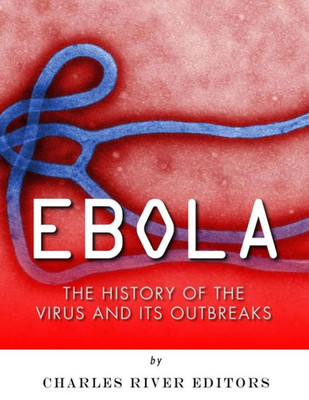
Ebola: The History of the Virus and Its Outbreaks
CreateSpace Independent Publishing Platform
ISBN13:
9781978314627
$10.61
*Includes pictures *Includes accounts written by doctors, scientists, and survivors about the history and effects of the virus *Includes a bibliography for further reading "The Ebola epidemic ravaging parts of West Africa is the most severe acute public health emergency seen in modern times. Never before in recorded history has a biosafety level four pathogen infected so many people so quickly, over such a broad geographical area, for so long." - World Health Organization, September 2014 It has long been a maxim that it is easy to forget when one is at war who the enemy really is, and that can certainly be said for the Ebola virus, which recently catapulted into headlines and instantly became the most feared disease in the world. In the case of the fight against Ebola, the enemy is not the person who has contracted the disease, nor is it the region where the virus has flourished. The enemy is a microscopic virus that, when seen under sufficient magnification, looks like a piece of loosely knotted rope. While a picture of Ebola under a microscope might look innocuous, it is a living organism that can be killed, but if it is not, it will multiply and evolve much like any other organism, including the human beings it so often kills. Despite the fact Ebola has been notorious for nearly 40 years, its ability to hide and change with the times has made its origins murky and left scientists without a vaccine. The World Health Organization (WHO) was able to identify the previously unknown disease after an outbreak in Sudan that killed a majority of the infected victims in 1976, and a doctor graphically described its effects later that year: "The illness is characterized with a high temperature of about 39?C [102?F], hematemesis, diarrhea with blood, retrosternal abdominal pain, prostration with 'heavy' articulations, and rapid evolution death after a mean of three days." Ultimately named after the Ebola River, the virus was a strain of the Marburg virus, and when it struck various nations in Africa from 1976-2003, it had incredibly high mortality rates and left hundreds dead in places like Zaire, Uganda, and the Democratic Republic of Congo. Most recently, a massive outbreak of Ebola began in Guinea and hit Liberia, where it has left thousands dead and ravaged local economies. All the while, the WHO conceded, "Countries affected to date simply do not have the capacity to manage an outbreak of this size and complexity on their own. I urge the international community to provide this support on the most urgent basis possible." In the meantime, the disease has trickled out to other nations, including the United States, and as of October 2014, there has been a scramble to isolate potential victims and race towards developing a vaccine. Ebola: The History of the Disease and Its Outbreaks looks at the origins of the disease and explains its causes, symptoms, and effects while discussing the current outbreak and previous ones. Along with pictures and a bibliography, you will learn about the Ebola virus like never before, in no time at all.
- | Author: Charles River Editors
- | Publisher: CreateSpace Independent Publishing Platform
- | Publication Date: Oct 16, 2017
- | Number of Pages: 70 pages
- | Language: English
- | Binding: Paperback
- | ISBN-10: 1978314620
- | ISBN-13: 9781978314627
- Author:
- Charles River Editors
- Publisher:
- CreateSpace Independent Publishing Platform
- Publication Date:
- Oct 16, 2017
- Number of pages:
- 70 pages
- Language:
- English
- Binding:
- Paperback
- ISBN-10:
- 1978314620
- ISBN-13:
- 9781978314627



